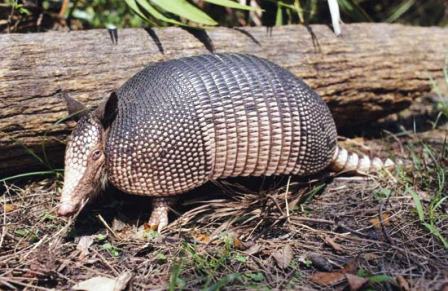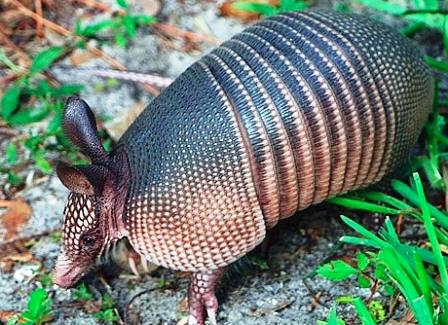Floridian Armadillos & Leprosy
The nine-banded armadillo, named for the nine breaks in the creature’s
leathery armor that allow it to flex its stiff hide, is an odd-looking
mammal about the size of a cat and ordinarily we do not think of armadillos being more of a problem than a pest who digs up our yard or roadkill laying along every highway in Florida but news this weeks tells us they may actually spread leprosy!
According to CBS news Florida has nine reported cases of leprosy across the state. Normally, the state health department says Florida sees only 10 cases in an entire year. Leprosy, a biblical disease that affects both the skin and nervous system is mostly found in areas like Africa, Brazil and India. Of the estimated two million people who suffered from leprosy world wide only about 294 cases were found in the entire United States last year.
Armadillos like forested or semi-open habitats with loose textured soil that allows them to dig easily. Armadillos tend to frequent the vicinity of streams and water holes, although they seem to avoid marshy areas. Tracks in the mud around small ponds give evidence that the armadillos visit them not only for purposes of drinking and feeding, but also to take mud baths.
With July being their mating season, armadillos are going to be very active. The main danger lies in their saliva which is believed how they spread the potentially deadly disease. Armadillos have a tendency to spit at predators as part of their defense system. In 1971, a captive armadillo developed leprosy 17 months after it was inoculated with the bacterium Mycobacterium leprae obtained from an infected human. Subsequently, armadillos have been used in further study of this disease.
Armadillos feed primarily on insects and their larvae. They also eat earthworms, scorpions, spiders, snails, and small vertebrates and their eggs. Reports of armadillo damage to birds' nests on the ground are rare. People cannot help but appreciate the fact that armadillos consume large amounts of armyworms, cockroaches, ants, wasps, flies, beetles, and grasshoppers.
According to CBS news Florida has nine reported cases of leprosy across the state. Normally, the state health department says Florida sees only 10 cases in an entire year. Leprosy, a biblical disease that affects both the skin and nervous system is mostly found in areas like Africa, Brazil and India. Of the estimated two million people who suffered from leprosy world wide only about 294 cases were found in the entire United States last year.
Armadillos like forested or semi-open habitats with loose textured soil that allows them to dig easily. Armadillos tend to frequent the vicinity of streams and water holes, although they seem to avoid marshy areas. Tracks in the mud around small ponds give evidence that the armadillos visit them not only for purposes of drinking and feeding, but also to take mud baths.
With July being their mating season, armadillos are going to be very active. The main danger lies in their saliva which is believed how they spread the potentially deadly disease. Armadillos have a tendency to spit at predators as part of their defense system. In 1971, a captive armadillo developed leprosy 17 months after it was inoculated with the bacterium Mycobacterium leprae obtained from an infected human. Subsequently, armadillos have been used in further study of this disease.
Armadillos feed primarily on insects and their larvae. They also eat earthworms, scorpions, spiders, snails, and small vertebrates and their eggs. Reports of armadillo damage to birds' nests on the ground are rare. People cannot help but appreciate the fact that armadillos consume large amounts of armyworms, cockroaches, ants, wasps, flies, beetles, and grasshoppers.



Comments
Post a Comment